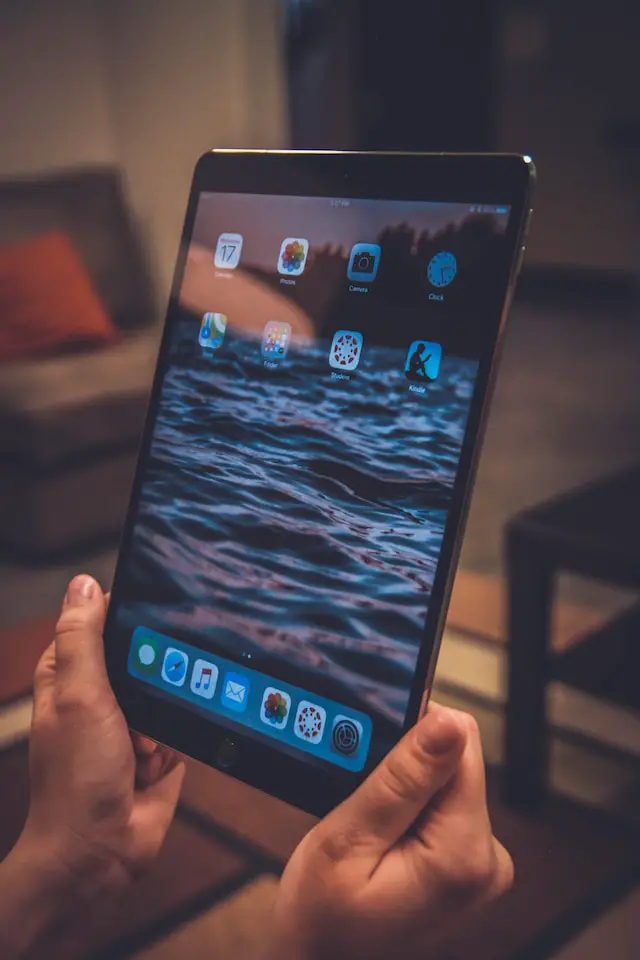Capacitive touch screens are made of a material that stores electrical charges. Resistive touch screens are made of two conductive layers separated by an insulating layer
What is a capacitive touch screen?
A capacitive touch screen is a type of touch-sensitive display that allows user interaction by detecting the electrical properties of the human body. It is commonly used in various electronic devices such as smartphones, tablets, laptops, and interactive kiosks. The capacitive touch screen technology relies on the principles of capacitance, which is the ability of a system to store an electric charge.
Here are some key features and considerations related to capacitive touch screens:
Construction: Capacitive touch screens typically consist of multiple layers. The outermost layer is made of a transparent material such as glass or a high-quality plastic that protects the underlying layers. Below this layer, there is a transparent conductive material, often indium tin oxide (ITO), that forms a grid of electrodes.
Capacitive Sensing: When a finger or a capacitive stylus touches the surface of a capacitive touch screen, it disrupts the electrostatic field of the grid. This change in the electrostatic field is detected by the touch screen controller, allowing it to determine the precise location of the touch.
Multi-Touch Functionality: Capacitive touch screens can support multi-touch gestures, enabling users to perform various interactions simultaneously, such as pinch-to-zoom, swipe, and rotate. The touch screen controller can differentiate between multiple touch points and track their movements independently.
Sensitivity and Accuracy: Capacitive touch screens are highly sensitive and offer precise touch detection. They can accurately track even the slightest touch, allowing for smooth and responsive user interactions. However, they may be less sensitive to input from non-conductive objects like gloves or styli unless specifically designed for such inputs.
Durability and Transparency: Capacitive touch screens are known for their durability and resistance to scratches and wear. The outer layer, typically made of glass, provides excellent protection and maintains the touch screen’s clarity and transparency, ensuring high-quality display visuals.
Gesture Recognition: Capacitive touch screens can recognize and interpret various gestures beyond basic touch inputs. This includes gestures like swiping, pinching, double-tapping, and rotating, which are widely used in modern touch-based user interfaces.
Ambient Noise Rejection: Capacitive touch screens are designed to reject unintended touch inputs caused by environmental factors like noise or moisture. Advanced touch screen controllers can filter out these false signals and ensure accurate touch detection.
Application and Integration: Capacitive touch screens are widely used in consumer electronics, industrial control panels, point-of-sale systems, automotive infotainment systems, and other applications that require user-friendly and intuitive interfaces. They can be integrated into different device sizes and shapes, ranging from small handheld devices to large displays.
Capacitive touch screens have become the preferred choice for touch input due to their responsiveness, accuracy, and durability. They provide an intuitive and seamless user experience, enabling effortless interaction with electronic devices.
What is a resistive touch screen?
A resistive touch screen is a type of touch-sensitive display that allows user interaction by physically pressing or applying pressure to the screen surface. It is commonly used in various devices, including smartphones, tablets, GPS systems, and industrial control panels. The resistive touch screen technology relies on the principles of electrical resistance to detect touch inputs.
Here are some key features and considerations related to resistive touch screens:
Construction: Resistive touch screens typically consist of multiple layers. The outermost layer is a flexible, transparent sheet made of polyester or similar material. On the inner side of this layer, there is a conductive coating, often made of indium tin oxide (ITO). Underneath the conductive layer, there is a spacer layer that keeps the two conductive layers apart when no pressure is applied. The bottom layer is also a flexible, transparent sheet with a conductive coating.
Pressure-Based Sensing: When pressure is applied to the surface of a resistive touch screen, the top and bottom conductive layers come into contact, creating an electrical connection. This contact point is detected by the touch screen controller, allowing it to determine the precise location of the touch.
Single-Touch Functionality: Resistive touch screens typically support single-touch inputs, meaning they can detect and track a single touch point at a time. They do not offer the ability to recognize multi-touch gestures like pinch-to-zoom or swipe.
Compatibility with Various Inputs: Resistive touch screens can be operated with any object that applies pressure, including fingers, styluses, gloved hands, or any other pointed object. This versatility makes them suitable for applications where precise touch is required.
Sensitivity and Accuracy: Resistive touch screens offer good sensitivity and accuracy, allowing for precise touch detection. However, their accuracy can be affected by factors like the force of touch and the resolution of the touch screen itself.
Durability: Resistive touch screens are known for their durability and resistance to impact. The top layer is designed to withstand scratches, dust, and other contaminants, making them suitable for rugged environments or applications that require robust displays.
Cost-Effective: Resistive touch screens are generally more cost-effective compared to other touch screen technologies, making them a popular choice for various applications.
Application and Integration: Resistive touch screens find applications in a wide range of industries, including retail, healthcare, transportation, and manufacturing. They can be integrated into devices of different sizes and shapes, providing a reliable and user-friendly interface.
While resistive touch screens offer certain advantages, such as compatibility with various inputs and durability, they may have limitations in terms of multi-touch functionality and lower transparency compared to other touch screen technologies. The choice of touch screen technology depends on the specific requirements, budget constraints, and intended use of the device or application.
How do capacitive and resistive touch screens work?
(Image by Niek Verlaan from Pixabay)

Capacitive and resistive touch screens are two different technologies that enable touch-sensitive interactions. Here’s how they work:
Capacitive Touch Screens:
- Construction: Capacitive touch screens consist of multiple layers, including a transparent conductive layer made of indium tin oxide (ITO) or a similar material. This layer forms a grid of electrodes.
- Principle: Capacitive touch screens detect touch inputs based on changes in the electrostatic field. When a conductive object, like a finger, touches the screen’s surface, it disrupts the electrostatic field of the electrodes.
- Touch Detection: The disruption in the electrostatic field is measured by the touch screen controller, which can determine the precise location of the touch. It calculates the change in capacitance at different points on the grid to identify the coordinates of the touch input.
- Multi-Touch Support: Capacitive touch screens can support multi-touch gestures by tracking multiple touch points simultaneously. Advanced touch screen controllers can interpret gestures like pinch-to-zoom or swipe based on the positions and movements of multiple touch inputs.
Resistive Touch Screens:
- Construction: Resistive touch screens consist of multiple layers, including two flexible transparent sheets with conductive coatings. A spacer layer keeps the two conductive layers apart when no pressure is applied.
- Principle: Resistive touch screens detect touch inputs by measuring changes in electrical resistance. When pressure is applied to the screen’s surface, the top and bottom conductive layers come into contact at the corresponding touch point.
- Touch Detection: When the two conductive layers make contact, an electrical circuit is completed, and the touch screen controller detects this change in resistance. By identifying the coordinates of the completed circuit, the controller determines the precise location of the touch.
- Single-Touch Support: Resistive touch screens typically support single-touch inputs, meaning they can detect and track a single touch point at a time. They do not have inherent multi-touch capability.
The choice between capacitive and resistive touch screens depends on factors such as the intended application, desired features, and budget considerations. Capacitive touch screens are known for their responsiveness, multi-touch support, and durability. They are widely used in modern smartphones and tablets. Resistive touch screens, on the other hand, offer versatility in terms of input methods, compatibility with various objects, and cost-effectiveness. They find applications in industries such as retail, healthcare, and industrial control panels.
How do I know if my touch screen is resistive or capacitive?
(Photo by Rodion Kutsaiev on Unsplash )

There are a few ways to tell if your touch screen is resistive or capacitive. The most obvious way is to look at the device itself. If it uses an electrical grid beneath the surface of the screen, then it is resistive. If the device has a smooth glass surface, then it is capacitive.
Another way to tell is by how you interact with the screen. On a resistive touch screen, you can use any object to interact with it, even something as non-conductive as a fingernail or stylus. On a capacitive touch screen, you must use your finger (or a conductive object) to interact with it.
You can also identify the quality of the touchscreen by its interaction. Resistive touch screens tend to be less responsive and have poorer sensitivity than capacitive touch screens.
Featured Image By – John Schnobrich on Unsplash








